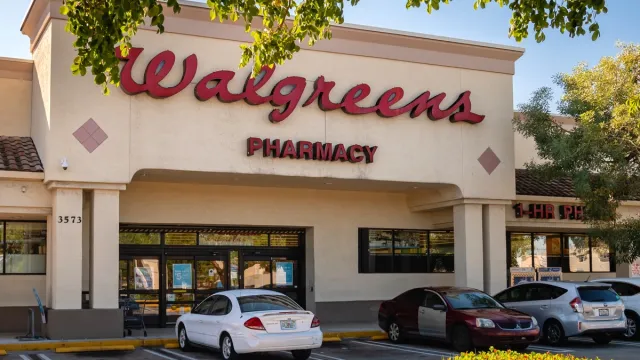Walgreens Is Closing “Significant” Number of 8,600 Pharmacies

News of store closures isn’t exactly surprising these days, especially regarding pharmacies. Big names like Rite Aid, CVS, and Walgreens have all been actively shuttering locations in recent years, citing underperformance, rising expenses, and theft. In fact, approximately 7,000 pharmacies across the U.S. have closed since 2019, University of Pittsburgh researcher Lucas Berenbrok told AP. That number sounds staggering, but Berenbrok also told the outlet that this estimate is actually “conservative.” Adding fuel to the fire, Walgreens is closing more pharmacies in the coming years.
RELATED: These Are All the Walmart Locations Closing in 2024.
During a June 27 earnings call, Walgreens CEO Tim Wentworth told investors the chain will shutter a “significant portion” of underperforming stores over the next three years. The Washington Post reported that Walgreens currently operates approximately 8,600 stores.
Wentworth didn’t share additional details on which stores would be closing nor when closures would start, but he did tell CNBC that “seventy-five percent of our stores drive 100% of our profitability today.”
“What that means is the others we take a hard look at, we are going to finalize a number that we will close,” Wentworth added.
In a statement to Best Life, a Walgreens spokesperson reiterated Wentworth’s comments from the earnings call and pointed to the percentage of underperforming stores.
“Approximately 25% of Walgreens stores are not contributing to our long-term strategy,” the spokesperson said. “We’re finalizing an optimization program that we expect will include closing a significant portion of these locations over the next three years. We are also taking a series of actions and making investments to enhance the customer and patient experience.”
The spokesperson noted that there is no official list of closing stores at this time.
RELATED: Shoppers Are Abandoning Costco for Sam’s Club—Here’s Why.
Wentworth didn’t elaborate on the exact reasoning behind the closures but did mention that the prescription market still hasn’t caught up to where it was before the COVID-19 pandemic.
“These headwinds have affected our performance and are materially weighing on our ability to serve patients profitably,” he told investors yesterday. “We are at a point where the current pharmacy model is not sustainable, and the challenges in our operating environment require we approach the market differently.”
On top of that, inflation is still troubling shoppers.
Speaking with CNBC, Wentworth also said that the company “assumed…in the second half that the consumer would get somewhat stronger,” but “that is not the case.”
“The consumer is absolutely stunned by the absolute prices of things, and the fact that some of them may not be inflating doesn’t actually change their resistance to the current pricing,” the CEO added. “So we’ve had to get really keen, particularly in discretionary things.”
Making matters worse, CNBC reported that Walgreens shares fell a whopping 20 percent after the company released its earnings yesterday. And while the company actually reported a 2.6 percent increase in sales for the third quarter, the “worse-than-expected U.S. consumer environment” is also forcing the retail chain to cut its full-year adjusted profit outlook.
On top of closing stores, the company is introducing other cost-saving initiatives. This includes launching a U.S. Retail Pharmacy action plan to improve patient and customer experience and simplifying its U.S. healthcare portfolio.